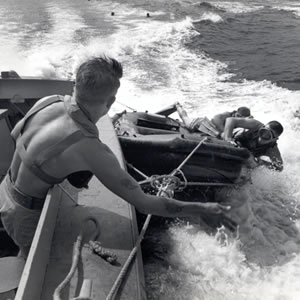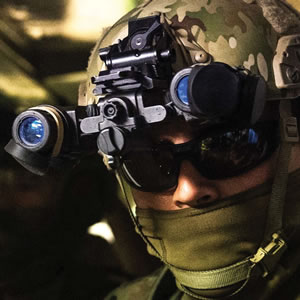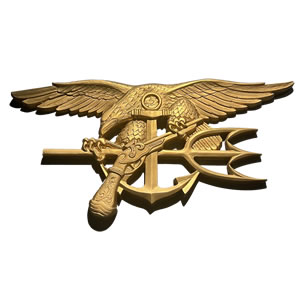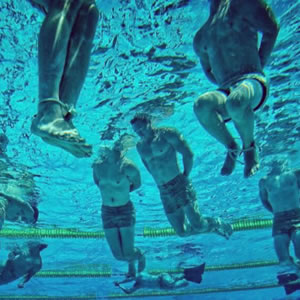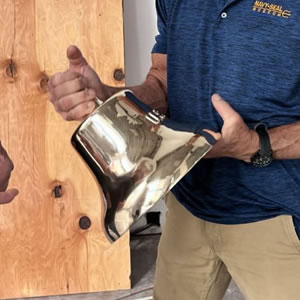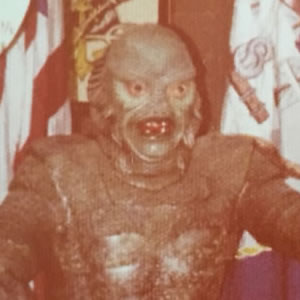ABOUT US NAVY SEALs
Navy SEAL History
U.S. Navy SEALs and their companion Special Warfare Combatant-Craft Crewmen (SWCC) have become an ubiquitous component of the on-going war against terrorism on a world-wide basis, yet, until recently, they have remained predominately and uniquely obscure.
Ethos of the U.S. Navy SEALs
SEAL training is tough and the job of a Navy SEAL is even tougher. In the heart of each operator is an ethic of the highest standards of personal integrity and performance, dedication to teammates and loyalty to country. SEALs possess more than physical prowess and intelligence; they have a mental toughness few can match.
The Trident
The Trident, also known as the SEAL pin or Special Warfare insignia, is a revered symbol worn by Navy SEALs, representing their elite status within the U.S. military. This gold insignia is comprised of three distinct parts: an anchor, a trident, and an eagle clutching a flintlock pistol. Each element carries significant meaning, reflecting the multifaceted nature of Navy SEALs’ capabilities and their distinguished heritage.
Training
BUD/S
Basic Underwater Demolition/SEAL Training (BUD/S) is one of the most grueling and demanding training programs in the U.S. military, designed to prepare candidates for the rigors of Navy SEAL operations. Held at the Naval Special Warfare Center in Coronado, California, BUD/S is a six-month program that tests the physical, mental, and emotional fortitude of the trainees.
The Bell
A bell represents multiple things to Navy personnel. It is used to signal time, or to announce the movement of high-ranking Naval officers. In Basic Underwater Demolition/SEAL Training (BUD/S), the bell holds profound symbolic significance. It is a large brass bell positioned prominently in the training area, serving as a constant reminder of the option to quit.
The Creature
The “Creature” (from the Black Lagoon) was the class gift brain-child of our class 63 honor-man Chuck McAdams who first spied the monster adorning leather belts and other south-of-the-border souvenirs on one of his forays to Tijuana (no longer authorized, I’m sure) during training.
SEALs Who Made History
Terry “Mother” Moy
Terry Moy joined the Navy at 17 years old and served for 23 years, including a stunning five tours of Vietnam. Moy earned his moniker “Mother” during his five-year stint as a Navy SEAL instructor at the Navy Special. The term was applied to Moy because, as candidates said, “he really knew how to bring up the children” meaning, he knew how to forge them into the kind of individuals the Navy needed as SEALs—ones who would not quit.

